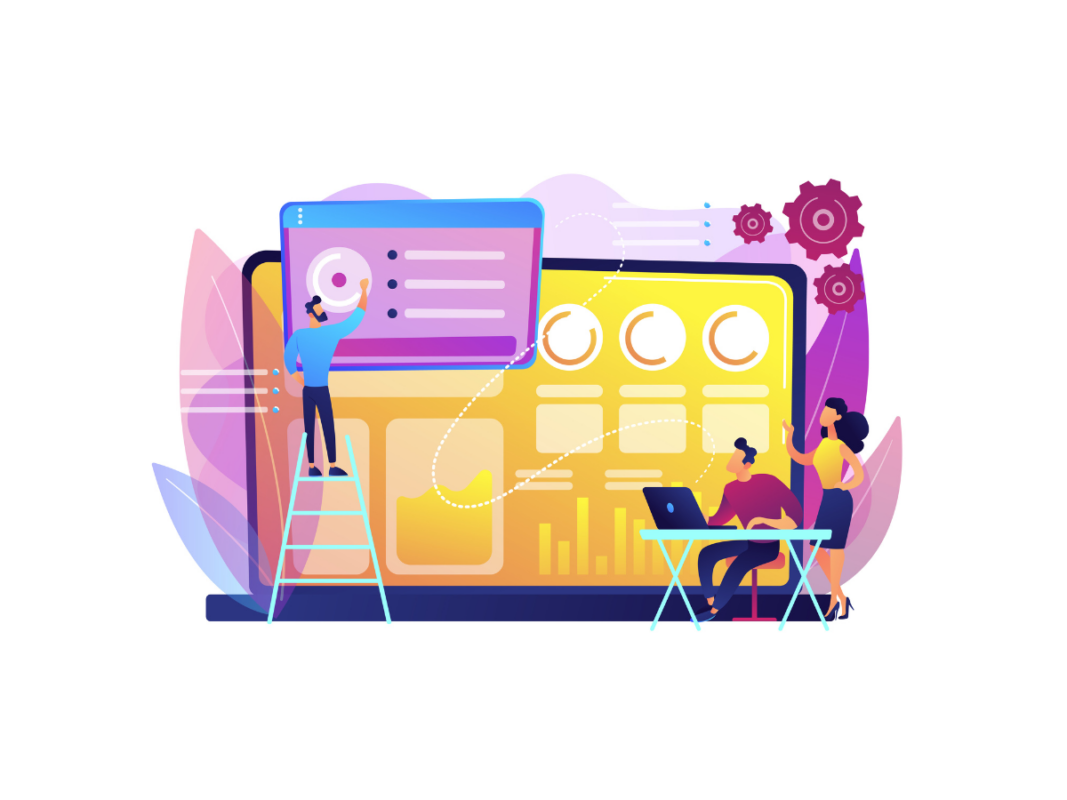We all know the benefits of lead generation, but it is just as important to develop a complementary demand generation strategy to really get the most out of your B2B digital marketing. If you want to ‘awaken’ interest in your product or service even before sales negotiations begin, a demand generation strategy can make all the difference. What touchpoints are involved in demand generation and what are the moves you need to make in order to get noticed in increasingly competitive market segments and successfully increase the number of prospects who are genuinely interested in your products or services? Let’s find out.
What is demand generation?
Demand generation is the set of techniques that generate attention for your product or service across multiple channels and touchpoints. Demand generation activities don’t as much include the direct promotion of a product or service, but focus on content that aspires to educate, deepen and gain trust, even without directly driving conversion or purchase. One of the most popular demand generation tools, in B2B as well as B2C, is the blog on your website. A successful content strategy, which involves regularly writing articles relevant to the services your company offers, must therefore take into account both search engine positioning and, above all else, ability to offer your audience valuable, original and meaningful content.
B2B Demand Generation
The B2B sector is characterised by the length of the average sales cycle: data by HubSpot show that a business-to-business negotiation can go on for more than six months before conclusion, due to the number of stakeholders involved and a greater consideration of risk and benefit factors for the company concerned. In contrast to the B2C sector, in B2B it is much more difficult to leverage the end consumer’s propensity to impulsive purchase of previously seen products or services through remarketing, or to remain on the crest of a wave through hype cycles and social network communities. B2B demand generation therefore focuses not only on creating a need for a product or service, but also on making the brand a guarantee of trust and professionalism for the content and practices shared with the market. A perfect example of a company able to make the most of B2B demand generation is the aforementioned HubSpot. Not only does HubSpot provide a complete and scalable inbound marketing platform, but – thanks to the content provided free of charge on the blog and in the HubSpot Academy section – it also represents a real reference point for marketing and communication professionals, regardless of whether they have purchased the product or not. 
AIDA model: draw your audience into your orbit!
Having reached this point, having defined the importance of implementing demand generation strategies for B2B digital marketing, it is time to define the degree of audience engagement with the content produced by or about you. For this purpose, we are helped by the so-called AIDA model, a real ‘funnel before the funnel‘ that identifies the four cognitive stages that a user goes through during this phase: 1) Awareness, “What do they do?” – The audience comes into contact with your company for the first time. 2) Interest, “I am interested” – The audience shows interest in the benefits you offer or the content you propose, gains trust and is willing to research further. 3) Desire, “I want it” – The audience shows an emotional connection to your brand and expresses (without yet materialising) the need to own your product or service. 4) Action, ‘Let’s try’ – Not to be confused with actual purchase, the last step can be any type of conversion, from entering data in a form to signing up for a newsletter. It qualifies the user as a lead and starts the actual marketing funnel.
Demand generation vs Lead generation
Demand generation and lead generation are two strategies that come together in digital marketing and inbound marketing practices, which is why both terms are often used interchangeably. Nevertheless, demand generation and lead generation are two separate and complementary practices that intervene at different stages of the sales cycle. As HubSpot effectively condenses in a dedicated post, ‘demand generation helps you grow, while lead generation helps you convert‘. Specifically, the goal of demand generation is to attract interest in your target audience, while lead generation focuses on converting interested users into prospects, into leads, and then into customers. Considering the structure of the sales funnel, as already mentioned, demand generation is placed at the top (TOFU), with the last phase of the AIDA model, i.e. the action, determining the start of the actual lead generation process. A final, but crucial difference is how you share content. Content intended for lead generation requires the input of personal data to access confidential information or material, whereas content intended for demand generation is freely available. To give you an example, this article and the blog on which it is hosted are demand generation tools, while the Lead Generation Playbook, in which you can learn more about Lead Champion’s functionalities for your B2B digital marketing thanks to exclusive insights, is a lead generation tool. 
B2B Demand Generation KPIs
As we have already mentioned, conversion is only the final step in a demand generation strategy. This might suggest that this is a volatile phase, difficult to quantify by means of metrics that can tell whether it is successful or not. However, there are KPIs that you can refer to in order to assess your B2B demand generation and the resources deployed for it:
Marketing Qualified Leads & Sales Qualified Leads
The numerical value of qualified leads, i.e. indicated as potential buyers by Marketing and Sales respectively, is a primary indicator of the effect your demand generation strategy is having on your target audience.
Cost Per Lead
The Cost Per Lead (CPL) also includes within it the costs dedicated to demand generation activities in relation to the budget. You can monitor the CPL for each touchpoint, or for a specific time period or a specific campaign.
Return On Investment
The costs of demand generation activities are also part of the factors to be considered when calculating ROI, a metric that measures the impact of the investment as a percentage of your company’s overall turnover. 
3 tips for a successful B2B demand generation strategy
1) Provide valuable content
Becoming a benchmark in the industry is what any marketer aspires to, but we all know it’s not easy. Investing time and resources in a good content strategy, however, is crucial to gaining the trust of future customers, especially in the B2B sector. Think first about how to communicate your expertise and in which formats, from the classic blog to participation in podcasts and events: knowledge after all is the most important value in B2B sales techniques, now is the time to put it out there!
2) Recognise and harness the power of community
The B2B world travels at a different speed than B2C, but that doesn’t mean your company should isolate itself from the world! Even in business-to-business you can use social networks – LinkedIn being one of them – to connect with your audience and build a community around your brand. Similarly, it is always useful to keep your eyes open to new platforms, trying out new and more creative ways wherever possible.
3) Know your audience
Identifying and targeting your ideal audience is the necessary preventive phase for the success of any demand generation campaign. You can achieve this by analysing your website traffic with platforms such as Lead Champion discover. Using IP Tracking and Artificial Intelligence, Lead Champion discover identifies the market segments most interested in your company and helps you monitor the interest in your content over time. Find out how to integrate Lead Champion into your demand generation by trying out the free demo!

